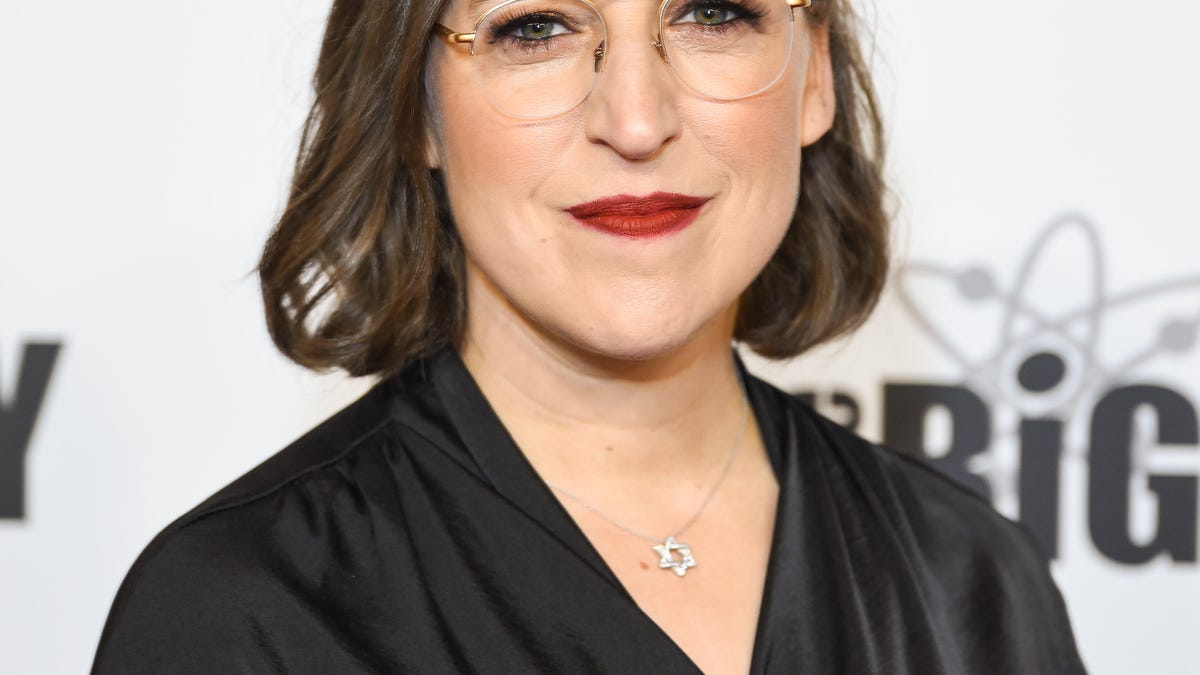The Big Bang Theory ends, but Dr. Amy Farrah Fowler lives on
Mayim Bialik gives us her insights into women working in STEM, a field she, like her character in the long-running show, continues to represent.

Mayim Bialik is a neuroscientist in real life.
In a season of long-running shows bringing their stories to a (mostly satisfying) end, The Big Bang Theory did just that: wrap up the adventures of very smart people who live in a shared apartment and spend their free time playing Settlers of Catan.
Along with physicists Sheldon and Leonard, we also said goodbye to a character who joined in season 3 and soon moved in to the Big Bang building permanently.
Bespectacled neurobiologist Dr. Amy Farrah Fowler, alumni of Harvard and, spoiler, wife of Sheldon, represents the world of science, technology, engineering and mathematics. Dr. Amy joins the ranks of female TV characters working in STEM, alongside Cosima in Orphan Black, Dr. Temperance Brennan in Bones and Mindy Lahiri from The Mindy Project, to name a few.
Played by Mayim Bialik (of Blossom fame), Dr. Amy made her entrance as a love interest to socially inept child prodigy Sheldon Cooper, wooing him with lines like, "All forms of physical contact, up to and including coitus, are off the table." A true TV love story rivaling Jon Snow and Ygritte soon blossomed, though with less death and more intellectual discussion.
Adept at both comedy and being really smart, Bialik is a neuroscientist in real life, having completed her Ph.D. at UCLA in 2007. Bialik has written four books, one of which, Girling Up, focuses on the many struggles girls face on their way to adulthood.
The Big Bang Theory may have ended after 12 seasons on CBS (disclosure: CBS is CNET's parent company) but Bialik continues to pave the way for budding female scientists. Speaking to CNET, she touched on women working in STEM and the reasons behind their low representation.
"There's a certain amount of hand wringing that I do about it, but part of it is also understanding that there's a shift in the way we see women at all in any profession," Bialik says.
A love story for the ages.
Women historically haven't pursued these kinds of careers, Bialik says, noting that the industrial revolution brought in the first shift of female involvement in sciences in recent history, with World War II seeing women participating in different ways.
"It was not so long ago that women were not even encouraged to work outside of the home," Bialik says.
A recent study on STEM looked into the number of women who earned degrees in those subjects. The study, from the National Center for Education Statistics, covered an eight-year period, starting in 2008, and found that the number of female students who'd been granted a STEM degree or certificate had increased by 48 percent over that period.
Despite the progress, embarking on a STEM career for a woman isn't necessarily an easy decision, Bialik stresses.
"As a woman, the decisions you make about when to have children is going to largely be determined by what kind of career you have and how the government has established you to have support while you're in your child-bearing years," Bialik says.
The work itself may not always be appealing either.
"Girls and boys do tend to for the most part want to think and learn differently," Bialik says. "The notion of being a lone scientist in a laboratory does not appeal to most girls.
"But the notion of being in the field, working with other people, working with animals, those are things that girls find more interesting."
Some of women's hesitation to take on STEM careers can be traced to the classroom when they're growing up.
"We have to remember there are social dynamics that are going to work on boys and girls in the classroom that exist elsewhere in society," Bialik says.
On whether she was afraid of putting her hand up in the classroom to answer a question, she says: "A lot of the boys are raised to be very confident, our culture emphasizes that, and for me, there was a lot of social pressure.
"I felt very embarrassed if I got something wrong."
The issue may change, it'll just take time.
"So again, I think a lot of that is what our culture is like in the patriarchy, and it's something that is absolutely shifting and will continue to shift," Bialik says.
"But ... that's not something that's going to happen overnight."
Looking ahead, Bialik advocates girls meeting and having mentor opportunities with women working in the sciences to hear firsthand about the choices those women made, why they made them, and to show that STEM careers can be creative, exciting and dynamic.
"It's not just sitting alone in a laboratory," Bialik says.



